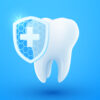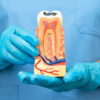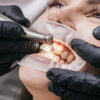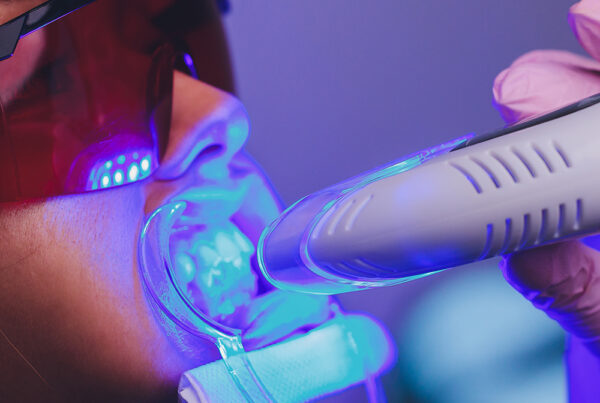What Is Tooth Stain?
Tooth stain is a discoloration of the teeth caused by various factors such as smoking, drinking coffee or tea, eating certain foods, and poor oral hygiene. Tooth stains can range from light yellow to dark brown in color. Professional teeth whitening is the most effective way to remove tooth stains and restore your smile. Teeth whitening products are available over-the-counter or through a dentist’s office. Professional teeth whitening treatments can help remove deep tooth stains that cannot be removed with regular brushing and flossing. With professional treatment, you can enjoy a brighter, whiter smile that will last for years to come.
Extrinsic Tooth Stain
Extrinsic tooth stain is a type of discoloration that affects the outer layer of teeth, also known as the enamel. It is caused by consuming certain foods and drinks, smoking, and poor oral hygiene. This type of stain can make your teeth look yellow or brown and can be embarrassing when you smile.
Fortunately, there are several ways to remove extrinsic tooth stains and restore your smile. The most common methods include professional whitening treatments from your dentist, over-the-counter whitening products, and home remedies.
Professional whitening treatments from your dentist are the most effective way to remove extrinsic tooth stains. Your dentist will use a special bleaching solution to break down the molecules that cause staining on the surface of your teeth. Depending on the severity of your staining, you may need multiple treatments to achieve optimal results.
Over-the-counter whitening products are another option for removing extrinsic tooth stains. These products contain peroxide or other bleaching agents that help break down stain molecules on the surface of your teeth. However, it’s important to follow instructions carefully when using these products as they can damage enamel if used incorrectly or too often.
Home remedies are also an option for removing extrinsic tooth stains. Baking soda mixed with water can be used as a paste to gently scrub away surface stains on teeth while apple cider vinegar has been shown to help lighten discoloration over time when used regularly as a mouthwash or applied directly to teeth with a cotton swab. Additionally, eating crunchy fruits and vegetables like apples and celery can help scrub away surface stains while increasing saliva production which helps rinse away food particles that contribute to staining.
No matter which method you choose for removing extrinsic tooth stains, it’s important to practice good oral hygiene habits such as brushing twice daily with fluoride toothpaste and flossing at least once per day in order to maintain white teeth and prevent future staining.
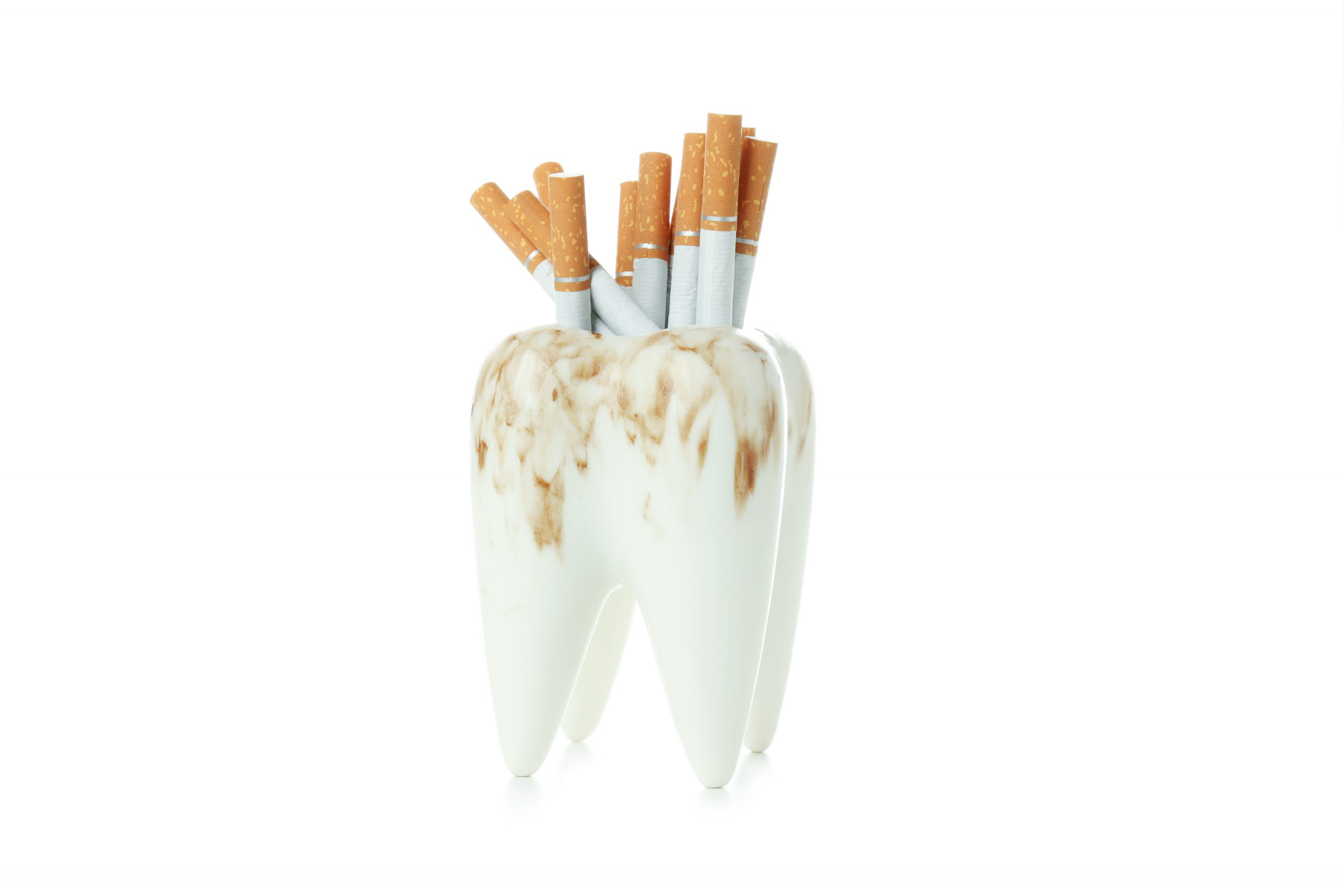
Intrinsic Tooth Stain
Intrinsic tooth stain is a type of discoloration that affects the inner layer of the teeth, known as dentin. This type of staining can occur due to certain medications, medical conditions, and even genetics. Intrinsic tooth stains are usually yellow or brown in color and can be difficult to remove with traditional whitening methods.
When it comes to intrinsic tooth stains, prevention is key. The best way to prevent this type of staining is by practicing good oral hygiene habits such as brushing twice a day and flossing regularly. Additionally, limiting your intake of dark-colored foods and drinks like coffee, tea, red wine, and cola can help reduce the risk of developing intrinsic tooth stains.
If you already have intrinsic tooth stains, there are several treatment options available to help restore your smile’s natural beauty. Professional teeth whitening treatments can be used to lighten the affected teeth without damaging them further. For more severe cases of intrinsic staining, veneers may be recommended as they provide a long-lasting solution for covering up discolored teeth.
No matter what type of treatment you choose for your intrinsic tooth stain, it’s important to maintain good oral hygiene habits after treatment in order to keep your smile looking its best. Regular brushing and flossing will help remove plaque buildup which can lead to further staining over time. Additionally, avoiding foods and drinks that are known to cause staining will help keep your teeth looking bright and white for longer periods of time.
If you’re concerned about an intrinsic tooth stain or would like more information on how you can prevent them from occurring in the first place, it’s best to consult with your dentist or dental hygienist for advice on how best to care for your smile. With proper care and maintenance, you can enjoy a beautiful white smile that lasts for years!
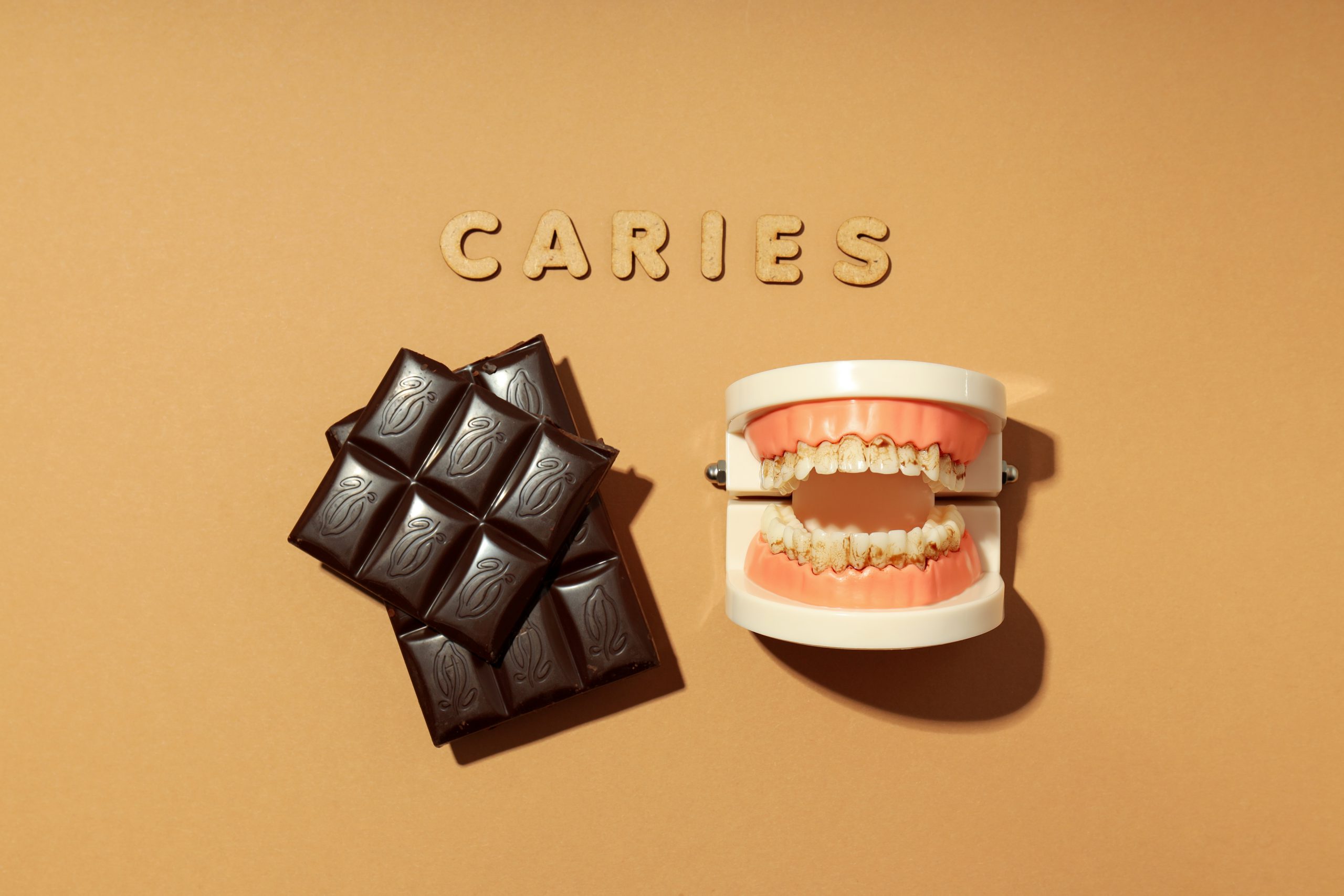
Discoloration From Medications
Discoloration from medications tooth stain is a common problem that many people experience. It can be caused by a variety of medications, including antibiotics, antihistamines, and even some over-the-counter pain relievers. The discoloration can range from yellow to brown or even black in color and can affect both the enamel and dentin of the teeth. Fortunately, there are ways to help reduce or even eliminate this type of tooth staining.
The first step in treating discoloration from medications tooth stain is to identify the cause. This can be done by talking to your dentist or doctor about any medications you are taking that could be causing the discoloration. Once the cause has been identified, it’s important to take steps to reduce or eliminate the staining.
One way to reduce discoloration from medications tooth stain is through professional teeth whitening treatments. Professional whitening treatments use powerful bleaching agents that penetrate deep into the enamel and dentin of the teeth, helping to remove stains and restore brightness. Your dentist may also recommend at-home whitening kits for more minor cases of discoloration.
In addition to professional whitening treatments, there are also several lifestyle changes you can make that may help reduce discoloration from medications tooth stain. Avoiding foods and drinks that are known to cause staining (such as coffee, tea, red wine, and dark berries) can help keep your teeth looking brighter for longer periods of time. Additionally, brushing twice daily with a fluoride toothpaste will help remove surface stains before they have a chance to set in deeper into the enamel and dentin layers of your teeth.
Finally, if all else fails and you’re still struggling with discoloration from medications tooth stain, there are other cosmetic options available such as veneers or bonding which can help cover up any remaining stains on your teeth. Your dentist will be able to advise you on which option is best for your particular situation so you can get back to having a bright white smile again!

Age-Related Tooth Stain
Age-related tooth stain is a common dental issue that affects many people as they age. It is caused by the accumulation of bacteria, plaque, and tartar on the surface of teeth. This buildup can lead to discoloration, yellowing, and staining of the teeth.
Age-related tooth stain can be embarrassing and make you feel self-conscious about your smile. Fortunately, there are several ways to prevent and treat this condition. The most important step in preventing age-related tooth stain is good oral hygiene. Brushing twice a day with a fluoride toothpaste and flossing daily will help remove plaque and bacteria from the surface of your teeth. Additionally, regular visits to your dentist for professional cleanings can help keep your teeth looking their best.
If you already have age-related tooth stain, there are several treatments available to restore your smile. Professional whitening treatments such as laser whitening or bleaching can lighten the color of your teeth and remove any stains or discoloration. Your dentist may also recommend other cosmetic treatments such as veneers or bonding to cover up any existing stains or discoloration.
In addition to professional treatments, there are some home remedies that may help reduce age-related tooth stain. These include brushing with baking soda or hydrogen peroxide, using whitening strips or gels, or drinking water with lemon juice added to it. However, these methods should only be used after consulting with your dentist first as they may not be effective for everyone and could even cause further damage if used incorrectly.
No matter what treatment option you choose for age-related tooth stain, it’s important to remember that prevention is key! Regular brushing and flossing combined with regular visits to your dentist will help keep your teeth looking their best for years to come!

Trauma Related Tooth Stain
Trauma related tooth stain is a type of discoloration that can occur on the teeth due to an injury or trauma. It is caused by bleeding into the enamel, dentin, and pulp of the tooth, which causes the discoloration. The most common cause of trauma related tooth stain is a blow to the face or mouth. This can happen during sports, fights, falls, or any other type of physical activity.
The discoloration caused by trauma related tooth stain can range from yellowish-brown to black in color. It may be localized to one area of the tooth or it may cover the entire surface. In some cases, it may even extend beyond the gum line and onto other parts of the mouth.
In order to treat trauma related tooth stain, it is important to visit your dentist as soon as possible after the injury has occurred. Your dentist will examine your teeth and determine what type of treatment is necessary for you. Depending on how severe your case is, they may recommend one or more treatments such as bleaching, veneers, bonding, crowns, root canal therapy, or extraction.
If you have suffered a traumatic injury that has resulted in trauma related tooth stain then it is important to take steps to protect your teeth from further damage. Make sure that you are wearing a mouthguard when participating in contact sports and avoid eating hard foods that could potentially chip or crack your teeth. Additionally, make sure that you are brushing and flossing regularly and visiting your dentist for regular checkups so that any potential problems can be caught early on before they become more serious issues.
Overall, trauma related tooth stain can be an unsightly problem but with proper care and treatment it can be managed effectively. If you have suffered an injury that has resulted in this type of discoloration then make sure to visit your dentist right away so they can assess your situation and provide you with appropriate treatment options for restoring your smile back to its original state!
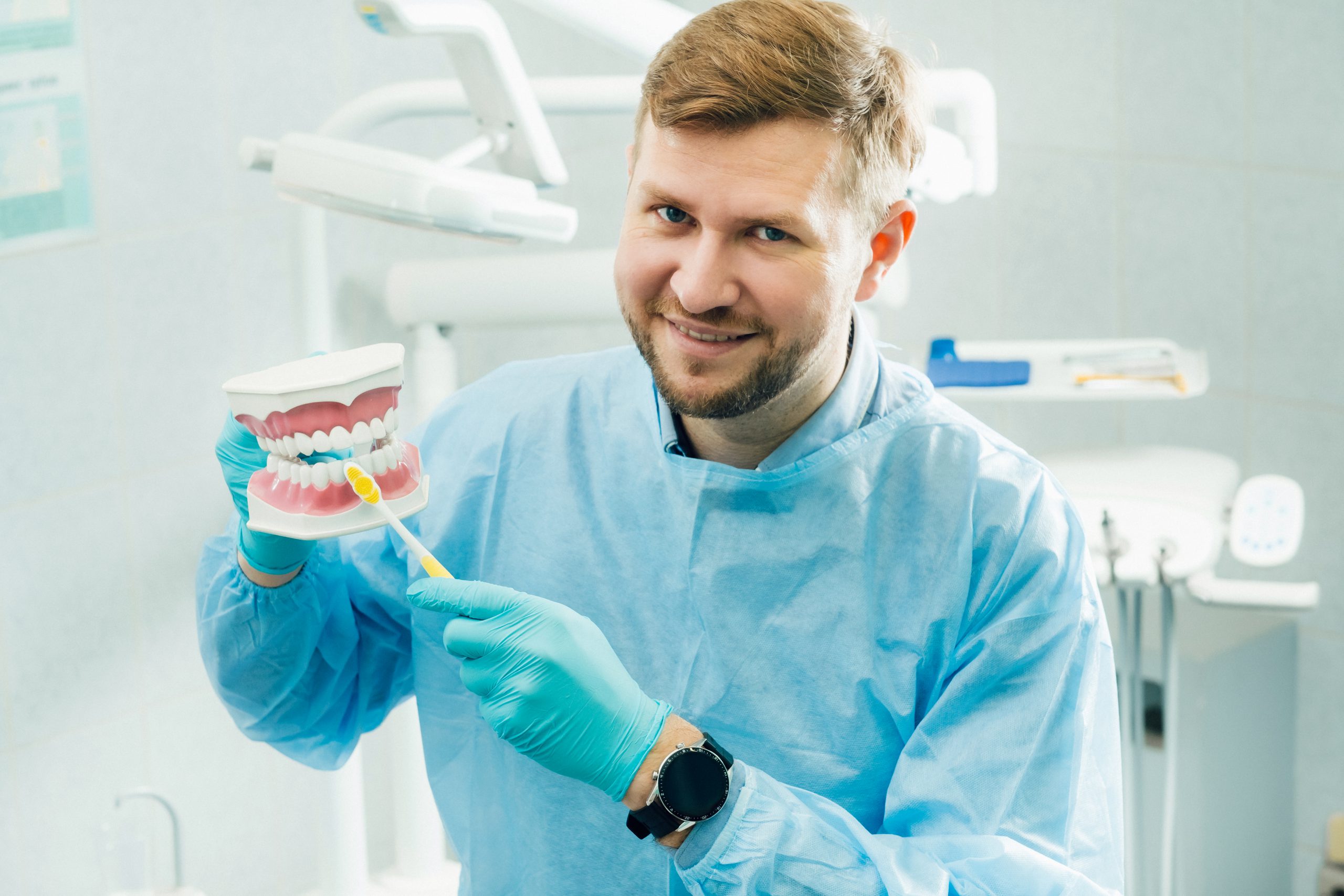
Genetics-Related Tooth Stain
Genetics-related tooth stain is a condition that affects the color of your teeth. It is caused by a genetic mutation in the enamel of your teeth, which results in an uneven and discolored appearance. The condition can range from yellowish or brownish stains to gray or black spots.
Genetics-related tooth stain is most common in children and young adults, but it can also occur in adults. It is usually hereditary, meaning it runs in families. Genetics-related tooth stain does not cause any health problems, but it can be embarrassing and cause people to feel self-conscious about their smile.
The good news is that genetics-related tooth stain can be treated with professional dental care. Your dentist may recommend one of several treatments, depending on the severity of your condition. These treatments include whitening agents, bleaching agents, and veneers. Whitening agents are used to lighten the color of your teeth while bleaching agents are used to remove deeper stains. Veneers are thin pieces of porcelain that are bonded to the front surface of your teeth to improve their appearance.
If you have genetics-related tooth stain, it’s important to take good care of your teeth and gums so they stay healthy and strong. Brush twice a day with fluoride toothpaste and floss daily to remove plaque buildup between your teeth. You should also visit your dentist regularly for checkups and cleanings so they can monitor any changes in the color or shape of your teeth over time.
If you’re looking for ways to improve the appearance of genetics-related tooth stain, there are some options available that don’t involve professional dental care. For example, you can try using whitening strips or trays at home or using natural remedies such as baking soda or hydrogen peroxide mixed with water as a mouthwash or paste for brushing your teeth with. However, these methods may not be as effective as professional treatments and could even cause further damage if not done properly.
It’s important to talk to your dentist before trying any type of treatment for genetics-related tooth stain so they can assess the severity of your condition and recommend the best course of action for you personally. With proper care and treatment, you can restore the natural beauty of your smile!

